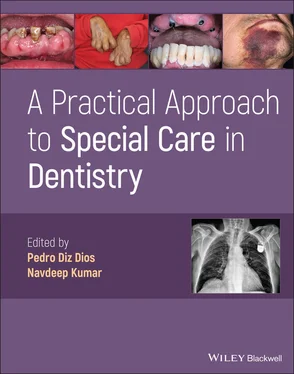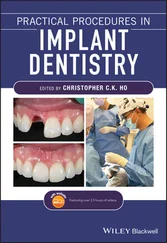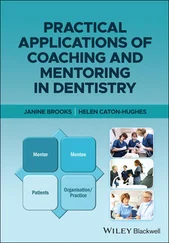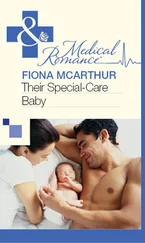A Practical Approach to Special Care in Dentistry
Здесь есть возможность читать онлайн «A Practical Approach to Special Care in Dentistry» — ознакомительный отрывок электронной книги совершенно бесплатно, а после прочтения отрывка купить полную версию. В некоторых случаях можно слушать аудио, скачать через торрент в формате fb2 и присутствует краткое содержание. Жанр: unrecognised, на английском языке. Описание произведения, (предисловие) а так же отзывы посетителей доступны на портале библиотеки ЛибКат.
- Название:A Practical Approach to Special Care in Dentistry
- Автор:
- Жанр:
- Год:неизвестен
- ISBN:нет данных
- Рейтинг книги:3 / 5. Голосов: 1
-
Избранное:Добавить в избранное
- Отзывы:
-
Ваша оценка:
- 60
- 1
- 2
- 3
- 4
- 5
A Practical Approach to Special Care in Dentistry: краткое содержание, описание и аннотация
Предлагаем к чтению аннотацию, описание, краткое содержание или предисловие (зависит от того, что написал сам автор книги «A Practical Approach to Special Care in Dentistry»). Если вы не нашли необходимую информацию о книге — напишите в комментариях, мы постараемся отыскать её.
Learn to treat dental patients with disabilities or who are medically compromised A Practical Approach to Special Care in Dentistry
A Practical Approach to Special Care in Dentistry
A Practical Approach to Special Care in Dentistry — читать онлайн ознакомительный отрывок
Ниже представлен текст книги, разбитый по страницам. Система сохранения места последней прочитанной страницы, позволяет с удобством читать онлайн бесплатно книгу «A Practical Approach to Special Care in Dentistry», без необходимости каждый раз заново искать на чём Вы остановились. Поставьте закладку, и сможете в любой момент перейти на страницу, на которой закончили чтение.
Интервал:
Закладка:
5 During the intraoperative examination, a comminuted fracture of the external table of the maxillary bone is discovered. What is the ideal approach?Attempt to preserve the alveolus and maintain the integrity of the bone crestConsider applying bone regeneration techniques (with bone or filling biomaterials and barrier membranes) ( Figure 1.2.3)The risk of delayed healing and exposure of the membrane should be assessed prior to proceeding
6 What antibiotic should be prescribed after completing the surgical procedure?The recommendation is for beta‐lactams, lincosamides and macrolidesMetronidazole and quinolones should be avoided (risk of triggering seizures)
General Dental Considerations
Oral/Perioral Findings
As the result of trauma during seizures Figure 1.2.3 (a) Tooth extraction and removal of maxillary bone fragments. (b) Bone regeneration techniques application.Facial trauma ( Figure 1.2.4a)Tooth fractures, luxation or avulsion ( Figure 1.2.4b)Temporomandibular joint subluxationLacerations of the tongue or oral mucosa
Adverse effects of antiepileptic drugsGingival enlargement (phenytoin, sodium valproate, phenobarbitone, vigabatrin, primidone, mephenytoin and ethosuximide) ( Figure 1.2.5)Ulcers (carbamazepine)Petechiae and gingival bleeding (carbamazepine, phenytoin and valproate)Xerostomia (carbamazepine)Dental abscesses (phenytoin, carbamazepine and valproate)Delayed healing (phenytoin, carbamazepine and valproate)Rashes (lamotrigine)Hyperpigmentation (phenytoin) Figure 1.2.4 (a) Sequelae of repeated facial injuries secondary to epileptic seizures. (b) Tooth intrusion as a result of oral trauma during a seizure.Stevens–Johnson syndrome (carbamazepine, lamotrigine)
Dental Management
As with many other neurological diseases, the dental treatment plan will be determined more by the degree of disease control than by the type of disease ( Table 1.2.1)
The dental team should be trained to provide emergency management of epileptic seizures in a dental setting; this is particularly important as typical stimuli in the dental clinic (stress, lights, noise) can trigger an epileptic attack ( Table 1.2.2)
Section II: Background Information and Guidelines
Definition
Epilepsy is a neurological disorder in which there is recurrent, paroxysmal abnormal brain activity, causing seizures and/or periods of unusual behaviour, sensations and sometimes loss of awareness. Approximately 50 million people worldwide have epilepsy, making it one of the most common neurological diseases globally.
Aetiopathogenesis
Epilepsy is idiopathic in almost two‐thirds of cases and typically presents in childhood
The disease has also been associated with cerebral hypoxia, infections, trauma, stroke and other neurological diseases, brain tumours and some genetic disorders
The triggers include food and sleep deprivation, hormonal changes, metabolic disorders, sensory stimuli and a number of legal and illicit drugs
The pathogenesis of epilepsy includes an imbalance between excitatory (glutamate) and inhibitory activity (gamma‐aminobutyric acid) within a neuronal network Table 1.2.1 Considerations for dental management.Risk assessmentSeizures may be triggered by stress, bright lights (including polymerisation lights), fatigue, vibration (electric toothbrushes)Patient may appear confused and tired if they present for care after a recent seizureIncreased risk of trauma, including dental traumaAntiepileptic drugs have been associated with adverse effects on the coagulation system – carbamazepine, phenytoin and valproic acid can cause thrombocytopeniaCriteria for referralPatients with poorly controlled/intractable epilepsy should be treated in a hospital settingMedical advice is recommended for patients wearing vagus nerve stimulatorsAccess/positionPerform dental treatment during a stable phase when seizure frequency is controlled (preferably at least 6 months without seizures)Avoid the time of day when seizures are more frequentConsider minimising stress with pharmaceutical sedation taken by the patient prior to the dental visit (may be prescribed by the doctor)If protective headgear is worn by the patient, do not remove itConsider the use of thimble protectors if seizures are associated with mouth clenchingCommunicationSome patients might have associated cognitive impairmentAnticonvulsants can cause bradypsychia, hinder speech and hence impede the ability to understandConsent/capacityCapacity may be impaired by the use of sedative medications taken to reduce stress/anxietyFollowing a recent seizure, patients may feel tired and experience memory lossAnaesthesia/sedationLocal anaesthesiaLidocaine may have proconvulsant effects, particularly if administered in large amounts or if inadvertently injected intravenouslyIt has been suggested that electronic dental analgesia should be avoidedSedationIt has been suggested that midazolam and nitrous oxide should be avoidedGeneral anaesthesiaSevoflurane, enflurane, etomidate, methohexital and ketamine should be employed with careDental treatmentBeforeEnsure antiseizure medication has been taken as prescribedMinimise seizure triggers (e.g. reduce stress and anxiety by explaining procedures before starting, keep bright light out of patient's eyes and provide dark glasses for the patient to wear)For patients who take valproate or phenytoin, the results of a full blood count/coagulation screen should be requested before performing an invasive procedurePatients wearing a vagus nerve stimulator should have a protocol in place preoperatively and attend with the supplied magnetDuringGingivectomy may be necessary for treating gingival enlargementAvoid diathermy devices in patients wearing vagus nerve stimulators (bipolar systems are strongly preferred)Fixed prostheses with a metal structure are recommended although anterior surfaces can be made of resin to facilitate repairsIf a removable prosthesis is chosen, it should be made of radiopaque material, with metal bases or at least acrylic reinforced with a metallic mesh; the design should also take into account the choking hazardConsider the construction of a bilaminate mouthguard if there is a history of repeated trauma to the teethAfterPrior to discharge, confirm that the patient is well with no evidence of seizure onsetDrug prescriptionThe following drugs should be avoided (interfere with anticonvulsants and/or increase their adverse effects): aspirin, tramadol, metronidazole, quinolones, azole antifungalsEducation/preventionAvoid electric toothbrushes if vibrations are known to be a trigger for seizuresGood oral hygiene and periodic calculus removal reduce the rate and severity of gingival enlargementIf drug‐associated gingival enlargement is recurrent, the physician should be consulted regarding changing the antiepileptic drugModification of the brushing technique may be required if there is increased bleeding as a side‐effect of some antiepileptic medication Figure 1.2.5 Severe gingival hyperplasia in a patient on phenytoin. Table 1.2.2 Management of epileptic seizure in the dental clinic.RecommendationsNot recommendedDiscontinue the dental treatmentRemove the instrumentation from the mouthThe patient should remain in supine decubitusManual application of the vagus nerve stimulation magnet may be helpfulLoosen the patient's clothing and tight fittingsKeep the airway patent, and place the head laterally to prevent aspirationTime the seizureContact medical assistance if the seizure lasts longer than 5 min/is repeated (more than 3 in an hour)Administer oxygen (10–15 L/min)Administer midazolam (route/dose varies according to national guidelines; 10 mg buccal midazolam generally recommended for adults; alternatively, 10 mg diazepam intramuscularly or rectally is recommended in some countries)Assess transferring the patient to a hospitalSit the patient upTransfer the patient to the floorPlace patient in lateral decubitusRestrict their movementsPut your fingers in their mouthInsert a mouth opener or similarAdminister benzodiazepines at the start of the seizure (should wait up to 5 min; national guidelines vary)Give food and drink if they have not fully recoveredSend all patients to a hospital (not required for a patient with known epilepsy who has a self‐terminating seizure with normal fit activity, and has recovered well, is accompanied and orientated)
Читать дальшеИнтервал:
Закладка:
Похожие книги на «A Practical Approach to Special Care in Dentistry»
Представляем Вашему вниманию похожие книги на «A Practical Approach to Special Care in Dentistry» списком для выбора. Мы отобрали схожую по названию и смыслу литературу в надежде предоставить читателям больше вариантов отыскать новые, интересные, ещё непрочитанные произведения.
Обсуждение, отзывы о книге «A Practical Approach to Special Care in Dentistry» и просто собственные мнения читателей. Оставьте ваши комментарии, напишите, что Вы думаете о произведении, его смысле или главных героях. Укажите что конкретно понравилось, а что нет, и почему Вы так считаете.












